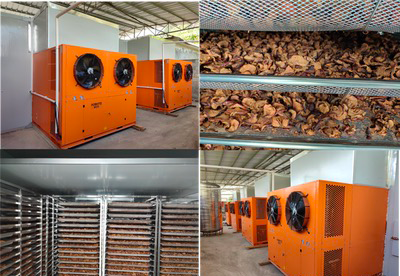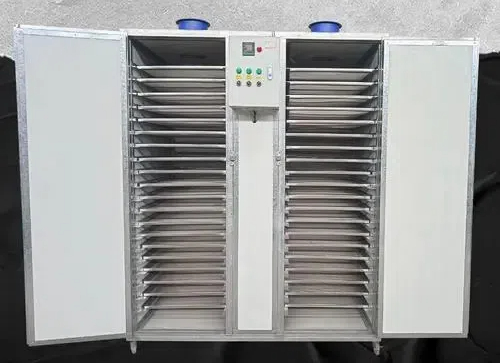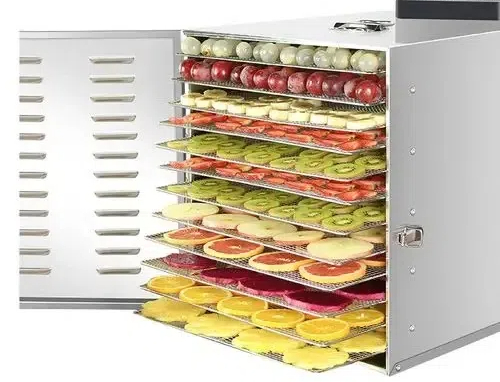
Content Menu
● Introduction
● Understanding Heat Pump Dryers
>> Benefits of Heat Pump Dryers
>> Common Heat Pump Dryer Problems
● Improving Drying Efficiency
>> 1. Optimize Loading Practices
>> 2. Maintain Ideal Temperature Settings
>> 3. Regular Maintenance Checks
>> 4. Monitor Humidity Levels
>> 5. Upgrade Components if Necessary
>> 6. Utilize Technology for Monitoring
● Conclusion
● Related Questions
>> 1. What are some signs that my heat pump dryer is not working efficiently?
>> 2. How often should I perform maintenance on my heat pump dryer?
>> 3. Can I use my heat pump dryer for all types of food?
>> 4. What should I do if my heat pump dryer is leaking water?
>> 5. How does humidity affect my heat pump dryer's performance?
Introduction
In the world of food processing, drying is a crucial step that significantly affects the quality, shelf life, and overall appeal of food products. Among various drying technologies, heat pump dryers have gained popularity due to their energy efficiency and ability to preserve the nutritional value of food. However, like any equipment, heat pump dryers can encounter problems that affect their efficiency. This article will explore ways to improve the drying efficiency of heat pump dryers while addressing common heat pump dryer problems.

Understanding Heat Pump Dryers
Heat pump dryers utilize a refrigeration cycle to remove moisture from food products. They work by evaporating refrigerant in a heat exchanger, which absorbs heat from the air inside the dryer. This warm air is then circulated around the food, promoting moisture evaporation. The moisture-laden air is then cooled, causing the moisture to condense and be removed from the system.
Benefits of Heat Pump Dryers
- Energy Efficiency: Heat pump dryers consume less energy compared to traditional drying methods. They can operate at lower temperatures while still achieving effective drying results.
- Temperature Control: They can maintain lower temperatures, preserving the quality and nutrients of food. This is particularly important for sensitive products like fruits and vegetables.
- Environmentally Friendly: Reduced energy consumption leads to a lower carbon footprint. Additionally, many heat pump dryers utilize eco-friendly refrigerants.
- Versatility: Heat pump dryers are suitable for various types of food products, including fruits, vegetables, meats, and herbs. Their adjustable settings allow for tailored drying processes based on specific product requirements.
Common Heat Pump Dryer Problems
Despite their advantages, users may face several issues with heat pump dryers:
- Inefficient Drying: This can be caused by various factors such as improper loading, airflow restrictions, or malfunctioning components. When airflow is restricted, moisture cannot be effectively removed from the food.
- Long Drying Times: Extended drying times can result from inadequate temperature settings or high humidity levels in the environment. If the ambient humidity is too high, it can overwhelm the dryer's ability to remove moisture.
- Frequent Breakdowns: Regular maintenance is essential to prevent mechanical failures. Components like compressors and fans need to be checked periodically to ensure they are functioning optimally.
- Unpleasant Odors: Sometimes, heat pump dryers may develop unpleasant odors due to mold or mildew buildup if not cleaned regularly. This can affect the quality of dried food products.

Improving Drying Efficiency
1. Optimize Loading Practices
Proper loading of the dryer is essential for efficient drying. Overloading can restrict airflow and lead to uneven drying.
- Best Practices:
- Ensure that food items are spread evenly in the drying trays.
- Avoid stacking items too closely together to allow for adequate air circulation.
- Use trays with perforations or mesh bottoms to facilitate airflow around the food.
2. Maintain Ideal Temperature Settings
Heat pump dryers operate best within specific temperature ranges. Setting the temperature too low may prolong drying times, while excessive heat can damage delicate foods.
- Recommended Temperatures:
- For fruits and vegetables: 50°C to 60°C
- For meats and fish: 60°C to 70°C
- For herbs: 35°C to 45°C
Understanding the optimal temperature for each type of food will help achieve better results without compromising quality.
3. Regular Maintenance Checks
Routine maintenance helps identify potential issues before they escalate into significant problems.
- Maintenance Checklist:
- Clean or replace air filters regularly.
- Inspect heat exchangers for blockages or dirt accumulation.
- Check refrigerant levels and ensure there are no leaks.
- Lubricate moving parts as necessary.
Regular maintenance not only improves efficiency but also extends the lifespan of your equipment.
4. Monitor Humidity Levels
High ambient humidity can significantly impact drying efficiency. Using a dehumidifier in conjunction with your heat pump dryer can help maintain optimal conditions.
- Humidity Control Tips:
- Monitor indoor humidity levels using hygrometers.
- Adjust dryer settings based on seasonal humidity changes.
- Consider using a dedicated space for drying that allows for better humidity control.
5. Upgrade Components if Necessary
If your heat pump dryer is older or frequently encounters problems, consider upgrading certain components for improved performance.
- Potential Upgrades:
- Install a more efficient compressor that can handle varying loads better.
- Upgrade insulation in the dryer to minimize heat loss during operation.
Investing in modern technology can lead to significant improvements in energy efficiency and performance.
6. Utilize Technology for Monitoring
Incorporating technology into your drying process can enhance efficiency significantly. Smart sensors and monitoring systems can provide real-time data on temperature and humidity levels inside the dryer.
- Benefits of Technology:
- Automated alerts when conditions fall outside optimal ranges.
- Data logging for analysis over time to identify patterns or recurring issues.
Using technology not only improves operational efficiency but also helps in making informed decisions regarding maintenance and upgrades.
Conclusion
Improving the drying efficiency of your heat pump dryer involves understanding its operation and addressing common issues proactively. By optimizing loading practices, maintaining ideal temperature settings, conducting regular maintenance checks, monitoring humidity levels, upgrading components when necessary, and utilizing technology for monitoring, you can enhance performance and extend the lifespan of your equipment.
Investing time in these practices not only improves efficiency but also ensures that your food products retain their quality and appeal. As you implement these strategies, you will likely notice a reduction in common heat pump dryer problems such as long drying times and inefficient operation.

Related Questions
1. What are some signs that my heat pump dryer is not working efficiently?
Signs include longer drying times, unevenly dried products, unusual noises during operation, or error messages on the control panel.
2. How often should I perform maintenance on my heat pump dryer?
It is recommended to conduct maintenance checks every three months or more frequently if you use the dryer heavily.
3. Can I use my heat pump dryer for all types of food?
While heat pump dryers are versatile, some foods may require specific temperature settings or drying methods for optimal results.
4. What should I do if my heat pump dryer is leaking water?
Check for clogged drainage systems or damaged hoses. If issues persist, consult a professional technician for repairs.
5. How does humidity affect my heat pump dryer's performance?
High humidity levels can slow down the drying process by increasing moisture in the air inside the dryer, leading to longer drying times and potential inefficiencies.
By understanding these aspects of your heat pump dryer and implementing effective strategies for improvement, you will enhance both its performance and reliability in your food processing operations.












